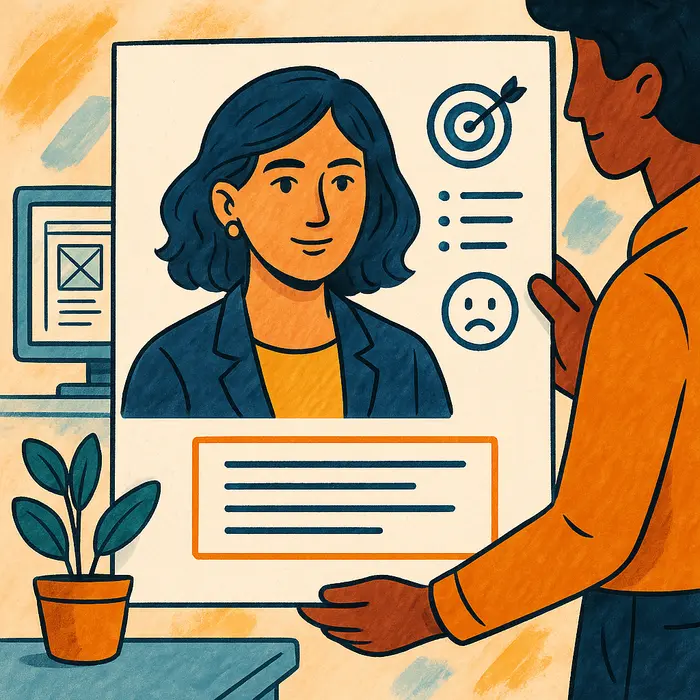When teams struggle to write clear requirements, it’s often because they don’t fully understand who they’re building for.
That’s where personas come in.
Personas are fictional but realistic representations of your users. They help teams step into the customer’s shoes and clarify what the user actually needs—not just what the team assumes.
In this post, we’ll show how to use personas to bring clarity and focus to your requirements process.
What Is a Persona?
A persona is a short profile that captures the key traits, goals, and pain points of a typical user or stakeholder.
A good persona includes:
- Name and role
- Goals and tasks
- Pain points or frustrations
- Relevant behaviors or preferences
Example: Maria, HR Manager
- Wants to automate onboarding tasks
- Struggles with inconsistent processes
- Values simplicity and clarity in tools
Why Personas Help with Requirements
- Focus discussions on the real user, not assumptions
- Make abstract needs more concrete
- Prevent feature bloat by focusing on what matters most
- Create empathy and alignment across teams
Step-by-Step: How to Use Personas for Requirements
Step 1: Create 2–3 Key Personas
Focus on your most important user types:
- Interview real users if possible
- Combine survey data, feedback, and field insights
Step 2: Share and Socialize
Make your personas visible:
- Use posters or slides in meetings
- Add them to your project brief or charter
Ensure the whole team knows who you’re building for.
Step 3: Write Requirements from the Persona’s Viewpoint
Use language that ties directly to the persona:
- “Maria needs to track onboarding progress in one place.”
- “James wants quick access to daily reports on his mobile.”
Step 4: Use Personas to Prioritize
If a feature doesn’t help a key persona solve a problem, consider cutting it or deferring it.
Ask:
- Who benefits from this?
- Does it align with their top goals?
Step 5: Validate Requirements with Users
Check your assumptions:
- Review requirements with actual users
- Ask: Does this match how you work?
- Adjust based on real feedback
Tips for Better Personas
- Keep them short—one page max
- Use real quotes and images to humanize them
- Avoid stereotypes or irrelevant details
- Update them as your understanding improves
Summary: Design with a Face, Not a Guess
When you use personas, your requirements get sharper, your features get more relevant, and your team gets more aligned.
Start with a few key users. Build realistic profiles. And write your requirements with their needs in mind.
It’s a small change that makes a big difference.
